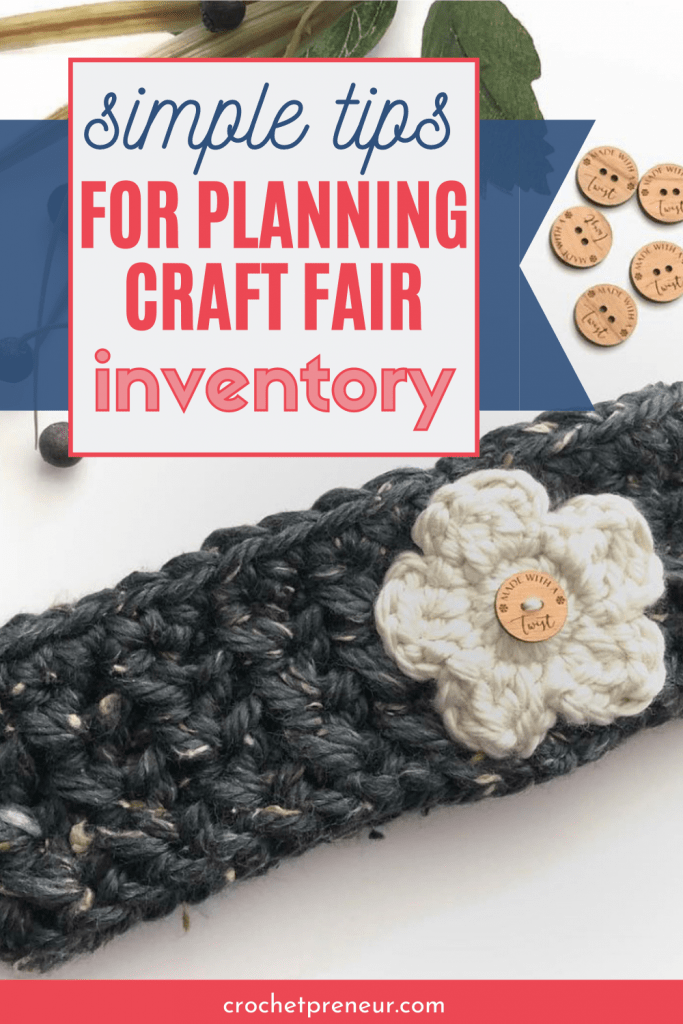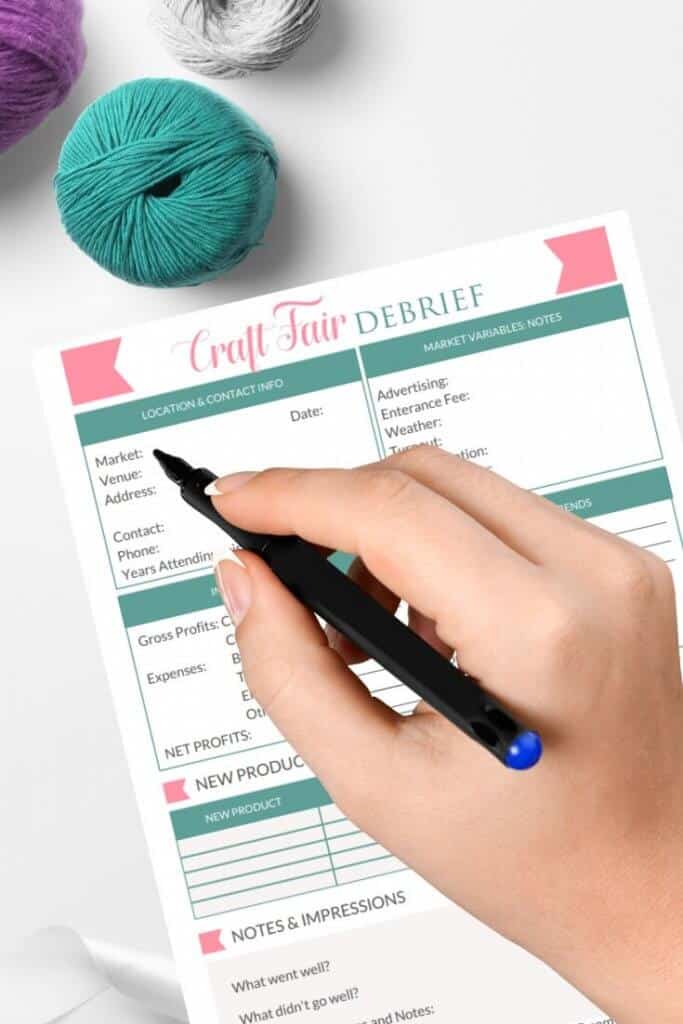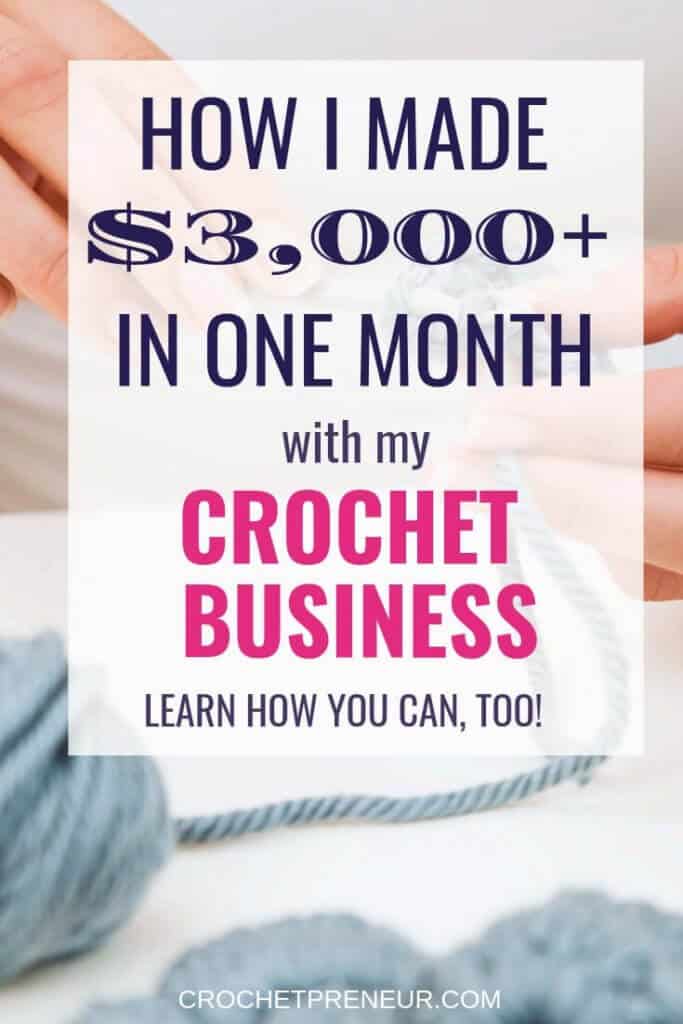So, you’re selling at a craft fair! That’s so exciting…and terrifying, isn’t it? One of the most common questions I receive from anxious sellers is, “how much craft fair inventory should I bring?”
It’s a smart question and one I can help guide you through, so don’t worry.

Calculating the amount of inventory you’ll need for a craft fair is the first step in preparing for your upcoming show – it is the one thing that will springboard the rest of your planning efforts. And, while there is no cut and dry answer, there are some steps you can take to make a best-guess for your business.
UNDERSTAND THE CROWD
Knowing the crowd will help you decide what and how much product to bring to the fair. If you’ve done a fair before, check your records to analyze your sales.
- How much product did you sell?
- What were your best sellers?
- How can you increase sales this year?
If you’ve never done this particular show before, connect with the organizer and previous vendors, ask:
- How many buyers are expected to attend?
- What type of advertising do they do?
- Are the best sellers in the high, medium or low price point?
- What percent of vendors return each year?
- What type of show is it? Different types of shows bring different types of buyers.
Whether you’ve done a show before or not, there is one crowd-focused question that is the most important – what type of crowd is it?
- What is the average age of the shopper?
- What are her style and preferences?
- How can you appeal to her?
- What is her price point and does she fit your target market?
- Is she a bargain shopper, brand seeker or boutique-style buyer?
It’s important to remember that different types of shows bring different types of buyers. Your best practice would be to only sign up for shows that match your target market – but sometimes that takes practice.
ASSESS YOUR PRODUCT LINE
Take a look at your product line and assess how much product you can realistically plan to sell.
- What are your best sellers? Plan to bring more of these
- What is your average price per item? Higher price points mean less inventory to meet sales goals. Lower price points mean more inventory to meet sales goals.
- How can you make your products “speak to” your buyers? What need are you filling and how will you highlight that in your booth display?
Ask, do your products measure up to the standards of your potential customer? This is a tough question, but an important one. If you sell high-quality, moderately priced products, and are selling to a bargain shopping crowd, you’ll struggle to make sales. Likewise, if you’re new to your craft, selling products made from inexpensive supplies, or are simply underpriced, you’re going to have trouble selling to buyers who are looking for professional quality, branded items.
Be sure that the products you’re selling match the crowd that you’re selling to.
DETERMINE SALES GOALS
One rule of thumb says to set a goal of selling 10 times your booth fee.
Another says that simply “making back booth fee” is enough. (It’s not.)
I much prefer the “it has to be worth my time” method of goal setting. My time is valuable and if I’m not making sales, I’m not making money, and I’m not happy. Take into consideration:
- How much time have you put into preparing for the fair?
- What is your cost above your normal business expenses? Not just booth fees, but the display, advertising, paying helpers, transporting products, etc..
- How much net profit will make the show worth your time?
If you use my Balanced Method product pricing strategy, we know that your retail price is cost [supplies, hourly rate, and business expenses] x 1.3 [wholesale price] x 1.54. Simply put, it’s cost x 2.
To determine your sales goal, simply take your desired net profit and multiply it by 2.
If you use some other method, determine how much you’ll need to make in gross sales in order to make the net profit you desire. This can be complicated, you should probably just use my Balanced Method. <wink>
Personally, I don’t return to a show if I am not making a net profit of $50/hour. So, for an 8-hour show, my net profit goal will be $400. Using the calculation, above, my gross profit goal would be $800.
Then, I include my booth fee because that is an expense over my normal business expenses per product. So, if my booth fee is $50, my total goal would be $850 in sales.
Every business has different goals – just decide what is best for you and your business. If this is your first fair, you’ll want to set a more reasonable goal (I started out with a $10/hour net profit goal when I first started). However, I want you to…
DREAM BIG
My example of $800 in gross profits is my “bare minimum” goal.
But that’s not the end of the story. For each show, I make three goals a “bare minimum” goal, an “I’ll be happy if” goal and a “the sky is the limit” goal.
Bare minimum x 1.5 = I’ll be happy if
I’ll be happy if x 2 = the sky is the limit
Therefore, my “sky is the limit” goal is $2,400 plus my $50 booth fee for a total goal of $2,450.
Whatever your highest goal, plan to bring 2 – 3 times that amount in inventory. The reason for this is that you’re going to need to keep your shelves stocked. Throughout the day, you’ll replace inventory that’s been sold with new inventory. This keeps your shop looking great and drawing in shoppers.
I know that sounds like a lot of inventory!
YOU CAN’T SELL WHAT YOU DON’T BRING
In the end, bring what you can afford to bring. I know that creating an inventory is an investment of both time and supplies. Some sellers can afford to bring thousands of dollars in inventory and others can’t.
You’ll need to decide what is best for you and your business for each show, knowing that you’re gradually growing and making new plans as you find what works for you and what doesn’t.
The whole process is about learning who your customer is, where she is, and how you can appeal to her. As time goes on, you’ll hone in on your market and be able to estimate your inventory and sales goals with more and more accuracy.
In my own business, I use an Excel spreadsheet to track my inventory and its value. That way, I know exactly how many more products I need to make before each show. Now, I’ve made the editable spreadsheet available to you!
Simply click the button below to purchase your own editable spreadsheet. Then, add your sales goals and product data and the built-in formulas will calculate your wholesale and retail pricing and your inventory value and needs for you.
Download the worksheet today and get working toward rocking your next craft fair!







This is perfect Pam! Thank you 😊
Although I run an online business of travel sleepwear for women that I have made in a factory, I am selling a few crafts I make for the first time at 2 craft shows this fall. Your information is helpful. At one show I will be with a friends who is very nervous so I am sharing with her your points!
Great resources! Thank you for sharing them!